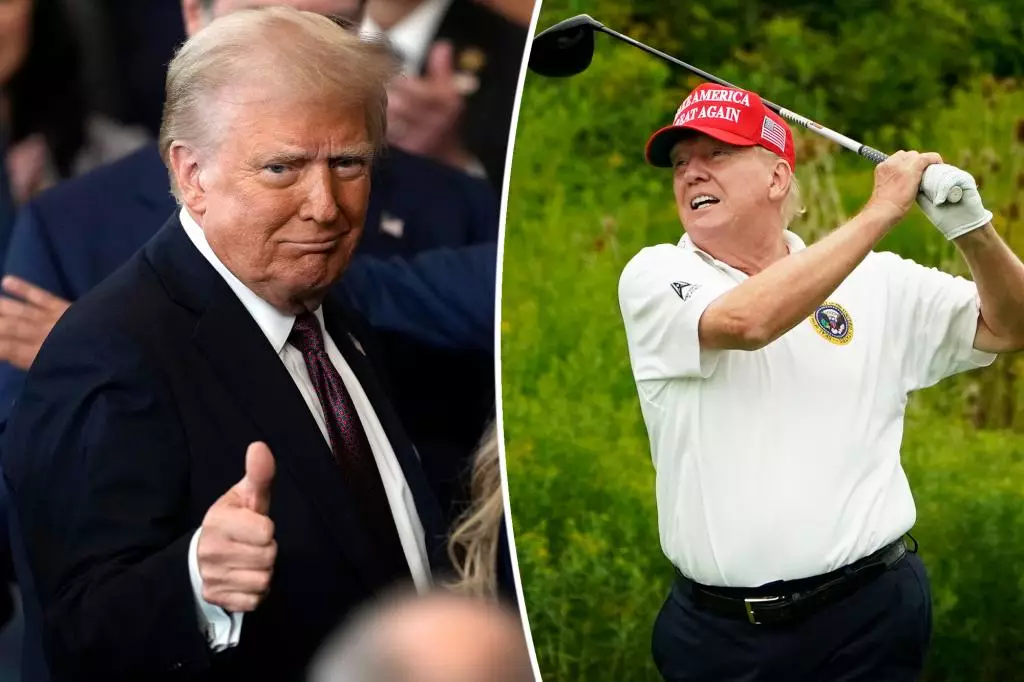The upcoming term of Donald Trump appears set to mirror his previous time in office, particularly in his preference for Mar-a-Lago as a key hub of presidential activity. While the traditional expectations of a president include being actively involved in political matters within Washington, D.C., Trump’s atypical approach is to retreat to his opulent Florida estate, famously dubbed the “Winter White House.” This intentional choice illustrates a significant aspect of his leadership style: a penchant for blending business with leisure, which often includes golf.
Trump’s fondness for golf has been highlighted in reports, suggesting that he enjoys conducting meetings with world leaders and establishing informal relationships on the golf course. Sources indicate that weekends will likely be reserved for tee times rather than policy discussions in the capital. The culture of golf, often perceived as a gentleman’s game, affords Trump an opportunity to maintain his social interactions while simultaneously engaging in international diplomacy—a duality that makes Mar-a-Lago a prime location for his engagements.
Golfing Statistics: The Numbers Don’t Lie
Examining Trump’s activities during his first term provides insights into a pattern of behavior that seems resistant to change. According to data compiled from various reports, Trump made an astounding 418 visits to properties bearing his name, with nearly 307 days spent at golf courses. This penchant for golf is not merely a hobby for Trump; it is an essential component of his governance style, paradoxically serving as both a leisure activity and a crucial means of networking.
For instance, an infamous incident in 2017 involved Trump playing golf with Japan’s Prime Minister, Shinzo Abe, a choice that reflects his intertwining of personal enjoyment with diplomatic strategy. This strategic use of his leisure time invites scrutiny, prompting questions about the appropriateness of blending pleasure with responsibility, particularly for a president.
The Shifting Paradigm: Balancing Golf and Governance
As he embarks on his second term, there were earlier indications that Trump intended to curtail his golfing escapades in favor of a more focused approach to governance. Statements from sources suggested that while he would not abandon golf entirely, he aimed to prioritize national interests over leisure time with friends on the greens. This suggested shift was welcomed by those concerned that excessive golfing could detract from pressing political matters that require attention.
Yet, recent revelations imply a reversion to old habits. A concerning incident—a man’s arrest for an alleged assassination attempt near one of Trump’s golf courses—highlights the delicate balance Trump must maintain. While his social calendar involves occasional rounds with notable figures like Elon Musk or Senator Lindsey Graham, the broader implications of his actions remain a point of contention.
Ultimately, Trump’s continued retreat to Mar-a-Lago and his obsession with golf underscore a complex relationship between leisure and leadership. The juxtaposition of personal pleasure against the backdrop of high-stakes governance creates a narrative steeped in controversy. As Trump no doubt prepares for another term characterized by decisions made on the greens, observers will be keenly watching the interplay of his golfing lifestyle against the rigorous demands of national leadership. The implications of his choices could very well shape his legacy, leading to ongoing debates regarding the effectiveness of a leader who prefers to wield power from the golf course rather than the Oval Office.

